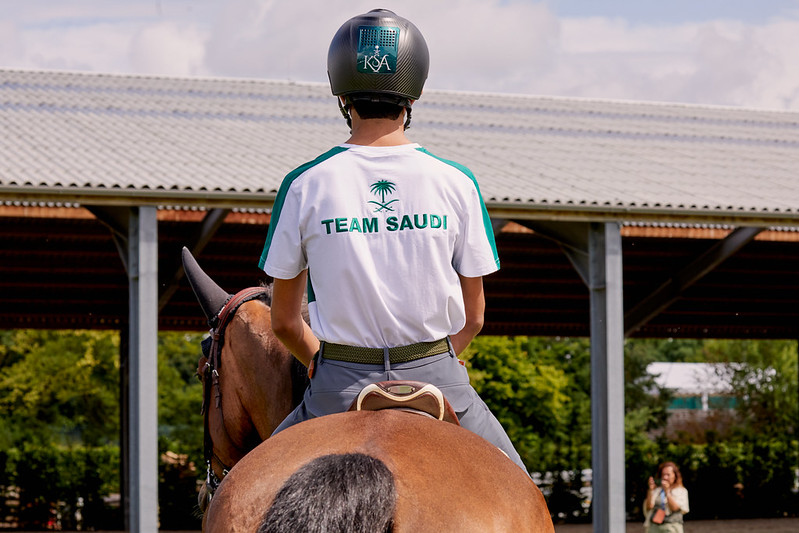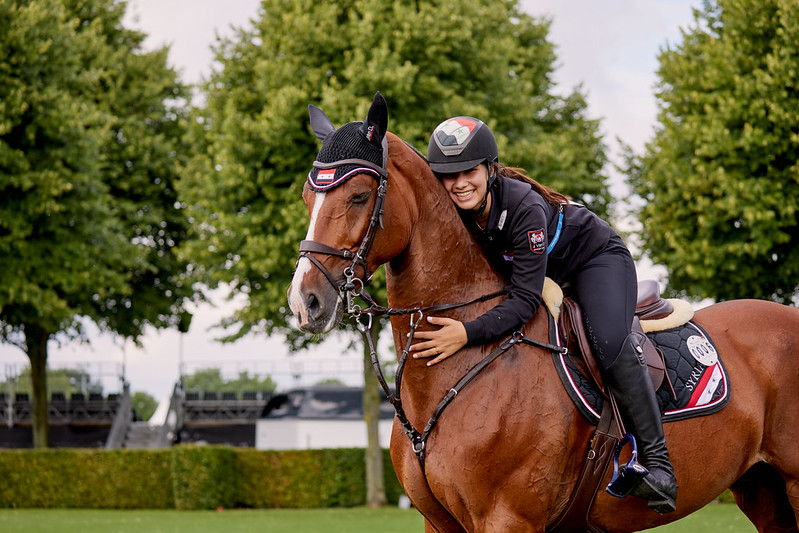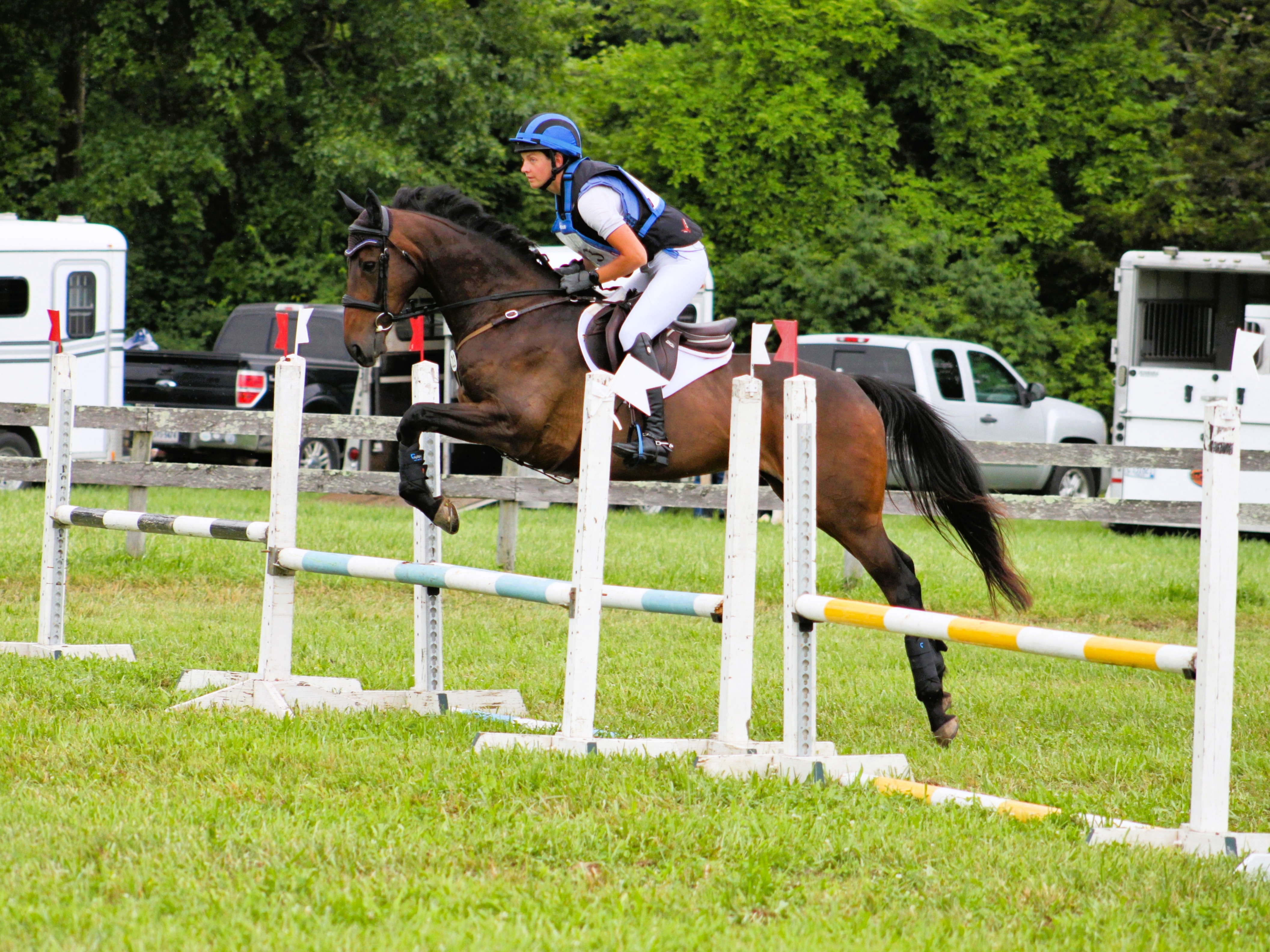
Let’s get the YEG party started! Photo ©FEI/Liz Gregg.
It’s going to be an extraordinary 11 days packed with a whole range of experiences for the 30 athletes taking part in the FEI Youth Equestrian Games 2022 which got underway in Aachen, Germany this weekend with the draw for horses. Competing with your peers on a horse with which you are familiar is challenging enough, but building a whole new partnership over the six days in the lead-up to the first round of the Team competition next Wednesday, June 29, takes it to another level.
To compete in the hallowed Soers Arena in Aachen is a lifetime ambition for athletes in every equestrian discipline, and one that this group of young Jumping riders, who are all aged between 15 and 18, are unlikely ever to forget.
The borrowed horses have been carefully selected for their jumping ability and temperament, and a training day tomorrow includes a session in the iconic Main Arena. That will be followed by a warm-up competition on Sunday and further training sessions during which the new horse/rider relationships will become well established over the next few days.
These Games, which will conclude with the battle for Individual medals on Saturday 2 July, have been devised to replace the Dakar 2022 Youth Olympic Games (YOG) which were postponed to 2026. The YOG has featured Equestrian Jumping every four years since the inaugural edition in 2010.

For Team USA, Mimi Gochman takes a moment with her drawn horse. Photo ©FEI/Liz Gregg
Qualification
The qualification for the Youth Equestrian Games 2022 mirrored that for the YOG, with most quota places filled through the 2021 Challenge Qualifiers while Belgium, France and Great Britain qualified at the 2021 FEI European Jumping Championship for Juniors and Children. As host country Germany is automatically entitled to a single quota spot and the home representative is 17-year-old Charlotte Höing, team gold medallist in the Children’s Championship in Fontainebleau (FRA) four years ago.
The selected athletes will compete in six continental teams, and Charlotte will ride for Team Europe alongside representatives from Belgium, France, Great Britain and Greece with Germany’s Peter Teeuwen in the role of Chef d’Equipe for this group.
The USA’s DiAnn Langer will manage Team North America whose five-member side includes riders from Costa Rica, Guatemala, Honduras, Mexico and America while Ecuador’s Jaime Morillo will guide the South American selection that includes one rider from his own country along with individuals from Argentina, Colombia, Paraguay and Uruguay.
Senegal’s Papa Seck is Chef d’Equipe for Team Africa whose athletes hail from Egypt, Morocco, South Africa, Tunisia and Zimbabwe while Tunisia’s Ahmed Bedoui will lead Team Asia, with athletes from Iran, Jordan, Palestine, Qatar and Uzbekistan.
The sixth and final continental side is a mixed group running under the heading of Team Australasia. Led by Australia’s Todd Hinde and with representatives from Australia and New Zealand, it also includes individuals from Saudi Arabia, Syria and the UAE.

Photo ©FEI/Liz Gregg
Multi-Cultural
It is a superb multi-cultural line-up of competitors and the young athletes are also being provided with a Culture and Education programme throughout their visit, with a number of sessions designed to encourage their development in both a personal and sporting capacity in line with Olympic values.
Dr Alan Currie, a member of the IOC Mental Health Working Group, will give a lecture on mental fitness while David Übis from the Uniklinikum RWTH Aachen will talk about physical fitness. Professor Christopher J. Newman and Doctor Stéphane G. Tercier from Lausanne University Hospital will discuss the risk and management of concussion, Olya Abasolo from the International Testing Agency and the FEI’s Catherine Bollon will address the topic of Human Anti-Doping and German influencer Harriet Charlotte Schulz will share her knowledge of effective use of social media.
There will be an interactive workshop on Equine Anti-Doping and Equine Welfare with FEI Legal Counsel Anna Thorstenson, a career advice session and a team-building session with JustWorld’s Estelle Navet.

Layan Al Mommani (JOR). Photo ©FEI/Liz Gregg
After the draw for horses some of the riders spoke about their feelings and the challenges that lie ahead over the next week and more ….
America’s Mimi Gochman, Team North America – “I’m very excited and I feel confident that all the horses are going to be amazing. I think it’s going to be a really great learning experience and we’ll get to learn from a lot of professionals and watch a lot of the best junior riders in the world compete so it’s all about learning from each other and doing the best you can. The biggest challenge will be focusing on the courses and not getting distracted by the atmosphere – it’s a very big ring, there’s a lot to look at, a lot of people, a lot of cheering – so just focusing and remembering what I’ve been taught, remembering the basics and keep my horse comfortable and my team comfortable”.
Qatar’s Saad Ahmed Al Saad, Team Asia – “Before the draw we were all nervous but I have hope because I trained hard over the last few months to get ready for any horse, and I hope I can do something good in this competition because it’s a great opportunity for me as a youth rider. And it’s also great for me to get to know these other people and to get to know my horse. The biggest challenge for me will be controlling the pressure in this big arena in front of this huge crowd!”

Saad Ahmed Al Saad (QAT) enjoys a first day of training. Photo ©FEI/Liz Gregg
LINKS:
Youth Equestrian Games 2022
Athlete Profiles
Education programme
Live Broadcast: ClipMyHorse.TV
Enjoy a few more photo highlights from training with the drawn horses. While we may not see these kids taking on any eventing this week, it’s really cool to see the opportunity presented and we enjoy following along! Maybe we’ll see eventing added in the future…
-

-
First day of training with Layan Al Mommani (JOR). Photo ©FEI/Liz Gregg
-

-
Adbulaziz Aleid (KSA). Photo ©FEI/Liz Gregg
-

-
Layan Al Mommani (JOR). Photo ©FEI/Liz Gregg
-

-
Amy Hay rides for Zimbabwe this week. Photo ©FEI/Liz Gregg
-

-
Aya Hamcho represents Syria. Photo ©FEI/Liz Gregg


















































